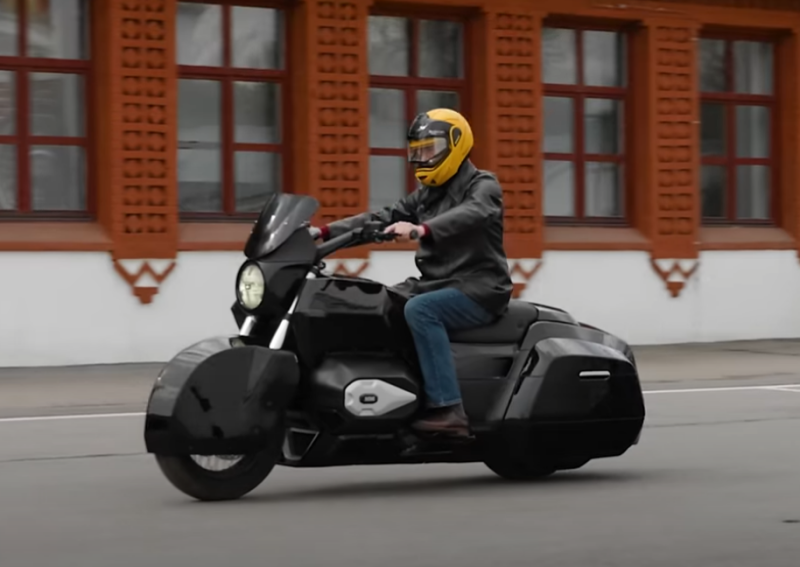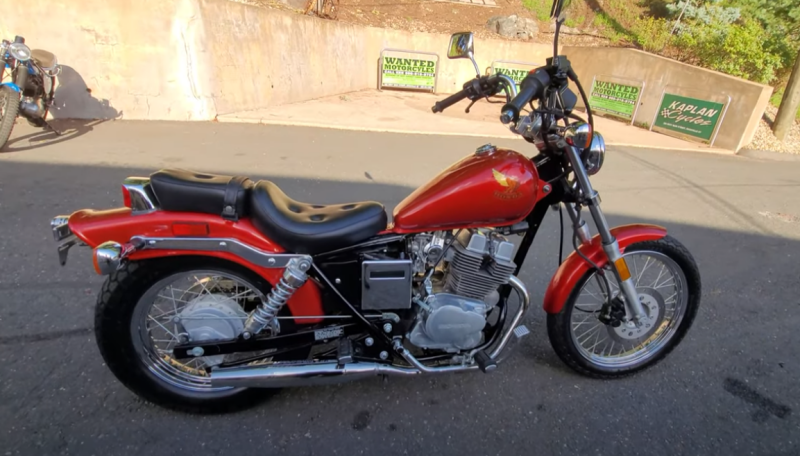But the flight of the Soviet cosmonaut would not have been possible without the preliminary painstaking work of many outstanding designers and scientists. And, of course, without the spacecraft, which became the "Vostok".
Preparatory stage
Few people now remember that official work on the satellite ship, which was supposed to deliver a person into space and, importantly, return him back, began in 1959. On May 22, a corresponding decree was signed.
 Launch of the first Soviet satellite. Photo: Youtube.com
Launch of the first Soviet satellite. Photo: Youtube.comBut work began a couple of years earlier - in 1957. It was then that the specialists of the experimental design bureau began designing the ship. Prior to this, experts have already worked on the creation of artificial satellites.
The first "swallow" was the "Object D", the development of which began in 1956. This satellite was supposed to be made weighing about 1 kg. and equip with the most modern electronics at that time.
Shortly before this, in 1954, the Soviet Union began to develop the R7 intercontinental ballistic missile. Its original purpose was to carry a nuclear warhead, but it was also useful for launching a satellite.
But things didn’t work out with “Object D” - it was too complicated. I had to replace it with the simplest satellite PS-1 - it was spherical with antennas. It was successfully launched into space on October 4, 1957. The Sputnik model, created on the basis of the combat R-7, was used as a launch vehicle.
On November 3 of the same 1957, the Soviet Union was the first in the world to send a dog named Laika into space. That flight did not include a return, but proved that it is possible to survive in space.
It turns out that by 1959, OTB-1 had every opportunity to launch a person. But it was necessary to conduct a few more experiments and ensure that the spacecraft returned to Earth.
 Launch of the Luna-1 station. Photo: Youtube.com
Launch of the Luna-1 station. Photo: Youtube.comThe next significant date in the history of world cosmonautics is September 14, 1959. Then the Luna-2 station managed to land on an extraterrestrial object. Three weeks after that, images of the far side of the moon were taken. Theoretically, the USSR was ready to make the world's first manned flight.
Project work
The first spacecraft in the world was called Vostok-1P. It was the prototype of the flying object that Yuri Gagarin later flew. But the work was carried out in the strictest secrecy, and only strictly limited information got into the press.
Say, these are ordinary satellites, like those that the USSR launched in 1957. The reasons for this secrecy were, and quite real. The United States of America, in parallel with the USSR, carried out their developments, trying to overtake their eternal rival.
In the USA there was a project "Mercury". It was structurally more complicated than the Soviet "Vostok", if only because it was a two-stage one.
 There was not enough space for an astronaut. Photo: Youtube.com
There was not enough space for an astronaut. Photo: Youtube.comSergei Korolev initially abandoned such a scheme, deciding that there was no need to complicate the design of the spacecraft. It is possible that this is what helped the USSR to become the first in space exploration.
Technical features of the ship
"Vostok" was seriously different from modern spacecraft. The satellite ship was simply not adapted to perform orbital maneuvers. But this was not required - the main task facing Soviet design engineers was to overtake the United States and become the first conquerors of space.
The main performance characteristics of the ship "Vostok":
- ? Length - 4 300 mm
- ? Maximum diameter - 2 mm
- ? Weight - 4 725 kg
- ? Space for only one astronaut
- ? Flight duration - no more than 10 days
The spacecraft had two compartments - one housed the pilot, the other contained instruments.
A couple of television cameras were installed inside, which were supposed to notify the whole world about which country was the first to conquer outer space.
The construction of the ship was carried out in an emergency mode. It was necessary to get ahead of the United States in this race. Therefore, many design solutions could not be applied. For example, I had to abandon the rescue system at the start. The designers considered that as a result of the tests they would work out the launch, so it is unlikely that a catastrophe will happen.
The redundant brake installation was also abandoned, as were other additional security systems. According to the designers, initially the risks for the future astronaut were about 50%. During the tests, the percentage was reduced to 30, but still, it was dangerous.
 Belka and Strelka are the first dogs to return from space. Photo: Youtube.com
Belka and Strelka are the first dogs to return from space. Photo: Youtube.comAlthough the designers constantly hung over the threat that the American cosmonauts would be the first, which they were periodically reminded of by the "top", they managed to make 5 test launches of the Vostok-1 spacecraft.
One of them entered the world history of astronautics - on August 12, 1960, the dogs Belka and Strelka were sent into flight, who returned to Earth alive and healthy.
Rocket "Vostok"
The launch of the spacecraft would not have been possible without a carrier. Its creation began in 1958. Without the military two-stage intercontinental ballistic missile R-7, Sergei Korolev and his team would not have succeeded in anything.
Although there was a lot of work, a third stage had to be added to increase the payload. Naturally, when developing a military rocket, the creators did not even think that they would want to use it in the space industry. But it fit perfectly due to its technical characteristics.
 Launch vehicle "Vostok". Photo: Youtube.com
Launch vehicle "Vostok". Photo: Youtube.comThe converted ballistic intercontinental missile R-7 received the index 8K72K. With a length of 38,2 meters and a weight of 287 tons, it could launch up to 4 kg into orbit. This is exactly what the Vostok-725 satellite ship was like. They tried to bring his weight to the maximum, although if there was an opportunity, it would be increased.
An interesting fact is that ordinary kerosene along with liquid oxygen acted as rocket fuel.
The first launch of Vostok took place in 1958. Then the start failed, as did the next two. Only the fourth launch, in 1959, was successful. Then the Luna-1 station was launched into orbit, which did not reach its destination, but became an artificial satellite of the Sun.
The following flights helped the designers polish the booster. It turned out to be so successful that it is still used in astronautics. Modern "Unions" are also built on this chassis.
The next step in space exploration was the launch of dogs. After Belka and Strelka, the design of the launch vehicle and the ship was improved. On March 9, 1961, the dog Chernushka was sent into space, and on March 25, Zvezdochka. It was a full dress rehearsal before the human flight.
 The first cosmonaut in the world - Yuri Gagarin. Photo: Youtube.com
The first cosmonaut in the world - Yuri Gagarin. Photo: Youtube.comThis hero was Yuri Gagarin. On April 12, 1961, he became the first person in the world to go into space and return from there. It was a courageous act to fly where no one had been before.
The ship had no emergency escape systems, and the launch vehicle had at least a 30 percent chance of exploding on launch. In fact, a person launched into orbit had no opportunity to influence anything.
Vostok-1 is a legend. Simple by today's standards, the spacecraft became the ancestor of a whole galaxy of Soviet, and then Russian successes in this area.










